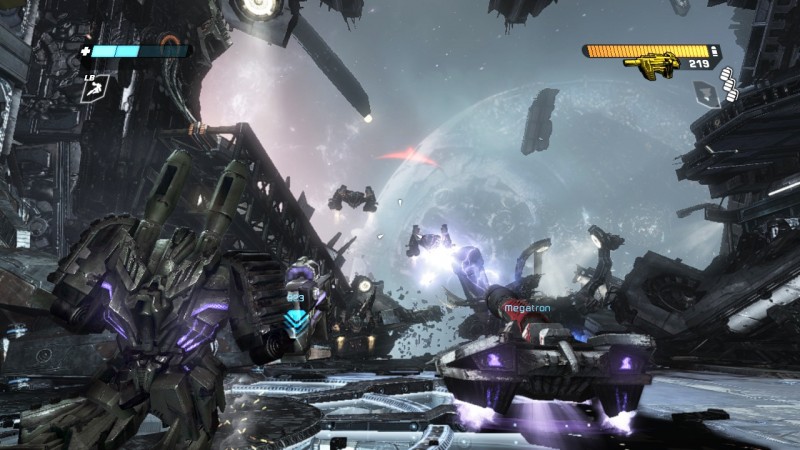Please support Game Informer. Print magazine subscriptions are less than $2 per issue
Places: Cybertron

Growing up in the 1980s, Transformers was one of those foundational science-fiction universes that made me fall in love with the genre. Newer sci-fi enthusiasts now enter the fold through a fantastic array of fictional backdrops to embrace in cartoons, games, comics, and movies. The pickings were slimmer 30 years ago, and few properties had the all-out appeal of the Transformers brand. Giant robots with lasers, and they can turn into awesome cars and planes? Little more was needed to sell me on the concept.
Equally important, these awesome giant robots weren’t from around here; they arose on a mysterious planet of metal in a far-distant solar system. Episodes of the ‘80s cartoon teased the allure of this mysterious locale – an alien landscape made not of forbidding jungles or harsh winters, as I’d seen in other sci-fi properties, but a gigantic metallic globe of shimmering towers, mazes of bridges, and steel highways.
The setting is one big reason that 2010’s Transformers: War for Cybertron is so thrilling for fans like myself. Here is the fantasy realized – a chance to take my own virtual tour of the Transformers’ home planet for the first time. I zoom along its streets and run through its mazelike corridors. High Moon Studios taps into the potential to play up what makes the Transformers brand so unique. The game’s version of Cybertron is a truly alien and unfamiliar environment defined by shuddering gears, sliding metal walls, and objects in constant twisting, shifting motion.

It’s not hard to imagine all the ways Cybertron could have failed as a game setting. Metallic hues can too easily blend together into a mishmash of grays and silvers, with flat and texture-free walls. Instead, when I first jump into War for Cybertron, I’m greeted by flashes of color, varied shapes, and detailed objects. Equally important, High Moon made the logical leap to bring Cybertron to life in a more literal way. If its inhabitants can change shape, why can’t the world in which they live do the same? As I walk through the opening levels, I’m constantly greeted by an environment that shifts and changes in response to my movements and actions. New weapons shape themselves into place on characters’ arms after picking them up off the ground. Spinning, colorful computer displays send up holographic images everywhere I look. And explosions shatter walls and doors, turning the metallic wreckage into new aspects of the landscape.
Beyond the moment-to-moment enjoyment of the backdrops, War for Cybertron succeeds by the sheer variety of distinct locations available to explore. The game takes me into outer space and into an orbiting space station above the planet that turns out to be far more than a lifeless hulk. I infiltrate a Decepticon prison and sneak through its hidden corridors. I journey into the depths of the planet to the mysterious core of Cybertron. For non-fans, it ensures an exciting variation in gameplay style and locale. For a longtime enthusiast like me, it’s a chance to uncover locations I imagined as a child, painted in vivid detail on the screen.
I love War for Cybertron because it gave me my first opportunity to explore the distant planet, but I’m all the more pleased that the game’s sequel, Fall of Cybertron, only ups the ante. Doubling down on the strategies that created the successful environments of the first game, Fall of Cybertron offers a new slate of intriguing spots to uncover, from the swirling dangers of the Sea of Rust to the gladiatorial pits where Megatron built his legacy.
Between the two games, High Moon Studios crafted a memorable game setting that feels distinct from the many sci-fi shooters it might have easily cloned. I only hope we’ll get to revisit Cybertron again in a future installment. Or better yet, perhaps we’ll have the opportunity to journey into outer space to flesh out more alien worlds in the Transformers universe.











